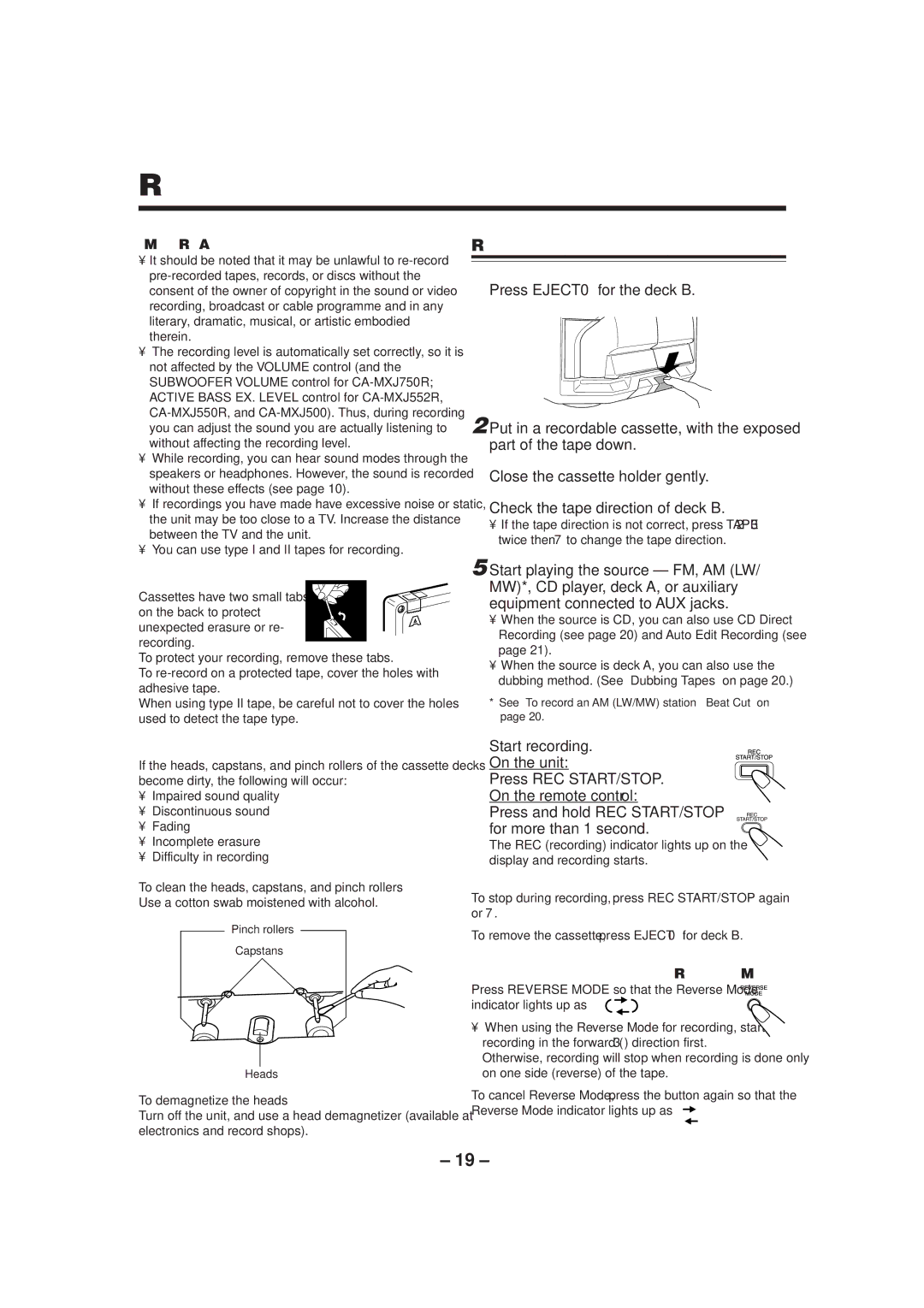CA-MXJ50, CA-MXJ550R, CA-MXJ552R, CA-MXJ750R specifications
The JVC CA-MXJ750R, CA-MXJ550R, CA-MXJ50, and CA-MXJ552R are a series of compact audio systems designed to deliver powerful sound in a stylish, space-saving package. Each model offers a unique combination of features and technology that appeals to various music enthusiasts and casual listeners alike.Starting with the JVC CA-MXJ750R, this model stands out with its robust 500 watts total output power, making it ideal for larger spaces or gatherings. It includes a 5-disc CD changer, allowing users to play multiple CDs without interruption. The CA-MXJ750R also features a built-in double cassette deck for those who appreciate the nostalgia of cassette tapes. Additionally, it incorporates a USB port for direct MP3 playback, and users can connect their devices seamlessly. Its advanced digital amplifier ensures high-quality sound reproduction, while various equalizer presets allow for personalized audio experiences.
The JVC CA-MXJ550R is a slightly more compact version, yet it still packs a punch with 400 watts of power. This model maintains the 5-disc CD changer and double cassette functionality, along with MP3 playback capability via USB. The CA-MXJ550R is designed with simplicity in mind, featuring an easy-to-navigate interface that makes it user-friendly for individuals of all ages.
The CA-MXJ50, while retaining excellent audio performance, is known for its sleek design and affordability. This model focuses on essential features, including a single CD player and a built-in FM/AM tuner. With 300 watts of total output power, the CA-MXJ50 is ideal for home use, providing quality sound for daily listening.
Lastly, the CA-MXJ552R combines the best of compact design and powerful audio. It includes Bluetooth connectivity, enabling wireless streaming from smartphones and other devices. The model offers 350 watts of total output power and supports USB playback while maintaining a stylish, modern appearance that fits seamlessly in any home decor.
In summary, the JVC CA-MX series ranges from the powerful CA-MXJ750R to the more compact CA-MXJ50. Each model showcases JVC's commitment to innovative audio technology, providing users with various options suited for personal preferences and listening environments. Whether it’s the nostalgic appeal of cassette decks, the convenience of USB and Bluetooth, or the impressive power output, JVC ensures that music lovers have the right system to enjoy their favorite tunes.

